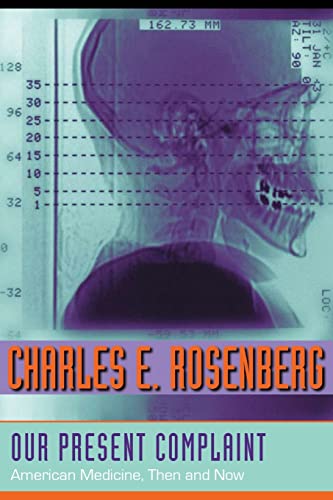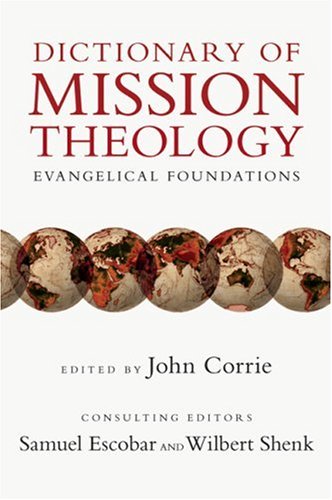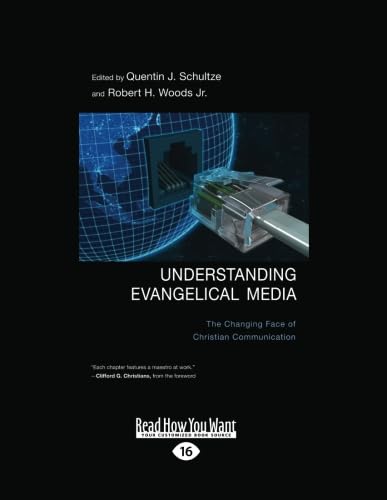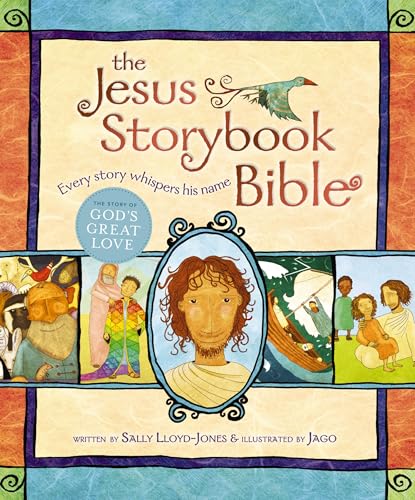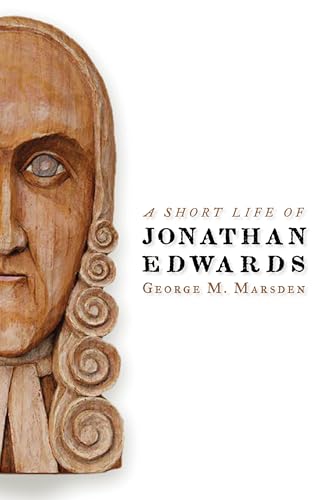The Oxford Handbook of Eschatology
Written by Jerry L. Walls, ed. Reviewed By Kent EilersThe Oxford Handbook of Eschatology, edited by Jerry Walls, is one of the newest additions to the Oxford Handbook series from Oxford University Press. As is the case with other volumes from this series, contributors are recognized specialists in their fields, and the relatively brief essays are generally high quality and represent cutting-edge research.
The volume begins with an introduction by Jerry Walls that maps the territory within Christian theology occupied by the topic of eschatology, introduces its various dimensions, and highlights some of its constitutive components: personal and social eschatology, temporality and eternality, teleology and history, theodicy, and cosmology. Toward situating the volume’s content in its historical context, he briefly charts the decline of eschatology in the 19th century and its resurgence in the 20th on the heels of Johannes Weiss and Albert Schweitzer. That Christian eschatology is an incredibly diverse topic is not a reality lost on Walls, and he goes to some length to broadly introduce the issues that polarize Christian eschatological debates, such as the nature of the resurrection, scripture and its interpretation (specifically the nature of apocalyptic literature such as Daniel and Revelation), and the relationship between future and realized eschatology with the attending societal and ecclesial implications. Related to the Christian polarization on eschatological issues, Walls argues that divergences between eschatological commitments are informed not only by differing biblical interpretations but by underlying moral and philosophical judgments as well. Alertness to this reality will only serve one’s reading of the essays that follow.
Following Walls’ introduction, the book unfolds in three parts, encompassing a total of thirty-eight entries that range over a wide field of biblical, theological, philosophical, and cultural issues related to the complex subject of eschatology. This Oxford Handbook is a massive tome totaling 726 pages, and the diversity of topics covered is equaled only by the diversity of its contributors, who represent various theological traditions and schools of thought. The format of the essays is generally predictable: introduction to the relevant contextual material, presentation of the debated issues, and some constructive proposals.
Part I considers ‘Historical Eschatology’ and is divided into two sections. The first is populated by essays on the Old Testament and the rise of apocalypticism, apocalyptic eschatology in the ancient world, New Testament eschatology and its relationship to the church, eschatology and the historical Jesus, and the place of eschatology in the Early Church Fathers. The second section explores ‘Eschatology in World Religions’ and includes discourses on Jewish, Muslim, Buddhist, and Hindu perspectives. Walls explains the importance of this section on non-Christian religions as ‘crucial to understand the conflicting visions of where our world is headed and what it all means’ (p. 16). The section is rounded out by a fascinating essay by Christopher Partridge that tracks end-time discourses in a wide array of new religions for whom millenarianism and apocalypticism have been importance features, such as Jehovah’s Witnesses, the Seventh-day Adventists, the Branch Davidians, the Nation of Islam, and even UFO religions, environmental movements, and New Age organizations. Partridge’s analysis of the relationship between apocalypticism and violence is of special interest. At the core of much end-time thinking (Christian or otherwise), there is a narrative of violence which encourages strong good-evil dualism, combat mythologies, and leads in some cases to the complete withdrawal from the wider society and even to ‘the rationalization of violence’ (p. 201). While the contributing factors to extreme cases of violence are multiple and complex (e.g. the Tokyo Subway bombing by Aum Shinrikyo), the key for all such scenarios is a form of ‘theological dualism’. This dualism, Partridge contends, can be found in a ‘relatively diluted form’ even in mainstream conservative theistic eschatologies. The worry, according to Partridge, is not that eschatological theologies such as these create interpretive matrixes for understanding evil and suffering or for making sense of religious persecution per se; instead, in some cases dualistic, millenarian eschatologies can produce ‘a rationalization of violence’ (p. 206) leading to disastrous results.
Part II explores eschatological beliefs in distinct Christian traditions and theological movements including Roman Catholic, Eastern Orthodox, Protestant, Fundamentalist, Pentecostal, Process, Liberation, and Feminist theologies. Following Peter C. Phan’s survey of Catholic eschatology and preceding Gerhard Sauter’s proposal for a renewed emphasis in Protestant eschatology on the ‘Christ predicate’, Andrew Louth expounds on Eastern Orthodox rationales for the final restoration of all (apokatastasis pantôn). Drawing on Origen, Gregory of Nyssa, and St. Maximus the Confessor, Louth maintains that Orthodox theology has always held a hope for universal salvation based on the belief of ‘the boundlessness of God’s love’. This finds expression in prayers of the Orthodox church that ‘there is nothing beyond the infinite love of God, that there is no limit to our hope in the power of his love, at least regards as a legitimate hope the universal salvation of all rational creatures, maybe even the devil himself and his demons’ (p. 245–46).
The third part of the volume, ‘Issues in Eschatology’, focuses on theological issues in its first segment and on philosophical and cultural issues in the second. In the first on theological issues, notable theologians Douglas Farrow, Clark Pinnock, and David Bentley Hart give their attention to church and ecumenism, annihilationism, and the meaning of life respectively (other chapters cover millennialism, resurrection, heaven, hell, purgatory, and universalism). The contribution by David Hart, ‘Death, Final Judgment, and the Meaning of Life’, is particularly good. Remaining true to his Eastern Orthodox heritage, Hart contends for eschatological divinization as the hope of fallen persons. The Christian story and specifically Christ’s resurrection fundamentally orients our view of death as infinitely unnatural and calls us to an ‘inextinguishable disquiet’ before death’s power:
That disquiet, it emerges, is a sign of a created disposition to grace; it is the original agitation of a spiritual summons to a kingdom not of this world, to the external life of a renewed creation. In the light of Easter, however, that aboriginal anxiety is transformed into a kind of spiritual ecstasy. For what God raised up on Easter was the deified humanity of Christ; and he thereby revealed that the true story of our humanity is that of a true union between humanity and God, a marriage of the finite to the infinite, a divinization of the creature in Christ (p. 487).
The second section of Part III examines philosophical and cultural issues, including contributions by Wolfhart Pannenberg (‘Modernity, History, and Eschatology’), Stephen Webb (‘Eschatology and Politics’), Michael Peterson (‘Eschatology and Theodicy’), and William Abraham (‘Eschatology and Epistemology’). The multifarious questions of cosmology and time are taken up expertly by Robert Russell (‘Cosmology and Eschatology’) and William Lane Craig (‘Time, Eternity, and Eschatology’). While these essays could have been five times their length in order to deal adequately with the complexity of the issues at hand, Russell and Craig provide a fine survey of the questions at stake and the current state of research. Welcome additions also include Heidi J. Hornik’s piece, ‘Eschatology and Fine Art’ and the piece ‘Eschatology and Pop Culture’ by Robert Jewett and John Shelton Lawrence. Hornik’s discourse tracks the appearance of eschatological themes in Christian art during the Medieval and Renaissance periods and addresses shifts in eschatological themes with an eye to history, culture, and changing doctrinal issues. Jewett and Lawrence’s contribution introduces readers to the relatively new field of ‘religion and popular culture’ then briefly (tantalizingly) addresses mediums of popular culture as diverse as Julia Ward Howe’s Civil War ballad “Battle Hymn of the Republic” and the Matrix trilogy.
The book concludes with a short essay by Richard Bauckham which, among other topics, addresses emerging eschatological issues ‘after Moltmann’ in the 21st century. Of particular interest to Bauckham are the ‘myths of progress’ that stubbornly remain even after postmodernism’s critique of modernity’s over-confidence in human, societal ‘progress’. Bauckham identifies several forms this takes: the neoliberal ideology of free-market economic globalization, postmillennial utopianism, and science and technology. In each case, for Bauckham, Christian eschatology must reject ‘yet another example of the modern attempt to make immanent reality what Christian eschatology expects from the transcendent power of God’ (p. 678).
There is much to commend the Oxford Handbook of Eschatology. The sheer scope of material held between its covers and the diversity of its contributors is, in itself, impressive. According to the criteria of scope, diversity, and quality, there simply is no comparison for this volume. It is hard to imagine a better place to find up-to-date, authoritative, introductory contributions on subjects related to Christian eschatology. It will, therefore, be a welcome addition to any seminary or university library. Professors in upper level university courses and graduate classrooms would find the highly readable essays here useful as brief introductions to eschatological topics. For researchers and interested readers, the footnotes, bibliographies, and suggested reading lists provide useful launching points for continued study.
However, the collection is not without some detracting qualities. The price alone makes it hardly reasonable for someone to purchase for their personal library (although I do not think Oxford had personal libraries in mind when publishing it). Further, and more problematic for the content of the volume, notably missing from the ‘theological issues’ section is an essay addressing the dogmatic relationships between eschatology and other doctrines within Christian systematic theology. While landmark theologians such as Karl Barth, Wolfhart Pannenberg, and Karl Rahner are noted in various essays, readers would be well-served had there been an essay interacting with the various ways eschatology has been dogmatically mapped within the Christian tradition. Ready examples come to mind such as the ‘actualism’ of salvation in Christ in Karl Barth’s Church Dogmatics and its consequences for Barth’s eschatology of final transformation, Wolfhart Pannenberg’s pneumatology in Systematic Theology and its implications for his account of eternity’s entrance into time in the consummation of history, or Karl Rahner’s highly anthropological vision of eschatological hope and its dependence upon certain Christological commitments.
Had a chapter such as this been commissioned, the odd lack of doctrinal discussions related to the doctrines of creation, providence, and Christology would likely have been remedied. Seeing the dogmatic relationship between eschatology and other doctrines might also have served to further bolster Walls’ insistence from the introduction that Christianity must never shrink from its status as ‘daring hope’ that ‘refuse[s] to resign our hopes or diminish our desires’ (p. 6) for it would have filled out this claim from across the whole breadth of Christian doctrine.
Kent Eilers
Huntington University
Huntington, Indiana, USA
Other Articles in this Issue
For Ezra had set his heart to study the Law of the LORD, and to do it and to teach his statutes and rules in Israel (Ezra 7:10)...
Salvation History, Chronology, and Crisis: A Problem with Inclusivist Theology of Religions, Part 2
by Adam SparksA fundamental requirement in an inclusivist understanding of the relationship between Christianity and other religions is evidence of God's salvific activity outside of any knowledge of Christ...
The Center of Biblical Theology in Acts: Deliverance and Damnation Display the Divine
by James M. Hamilton Jr.Acts 1:1 opens with a reference to what Jesus "began to do and teach"1 recounted in the Gospel of Luke, indicating that this second volume will carry the narrative of Jesus' actions and teachings forward...
Shared Intentions? Reflections on Inspiration and Interpretation in Light of Scripture’s Dual Authorship
by Jared ComptonIt was not too long ago that Kevin Vanhoozer answered the question Is There a Meaning in This Text? by relocating meaning in authorial intention,1 doing so even more robustly (not to mention, evangelically) than E...
The original question I was asked to address was "How does our commitment to the primacy of the gospel tie into our obligation to do good to all, especially those of the household of faith, to serve as salt and light in the world, to do good to the city?" I will divide this question into two parts: (1) If we are committed to the primacy of the gospel, does the gospel itself serve as the basis and motivation for ministry to the poor? (2) If so, how then does that ministry relate to the proclamation of the gospel?



